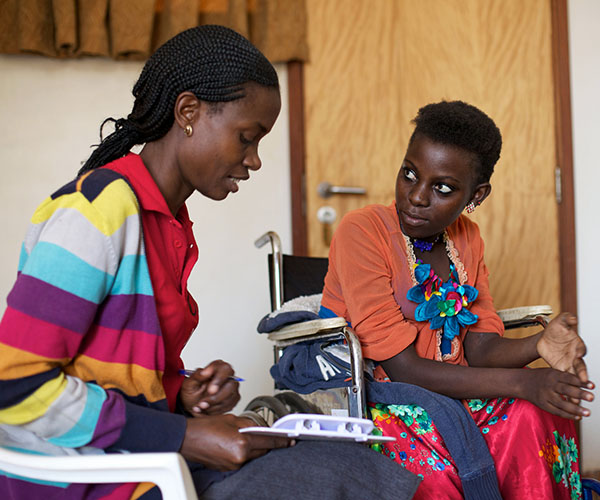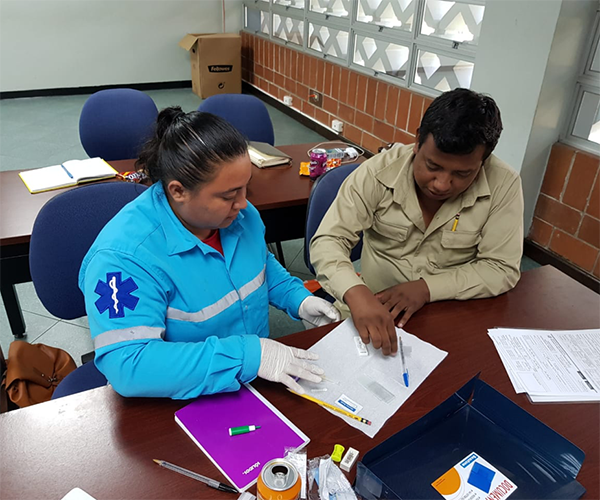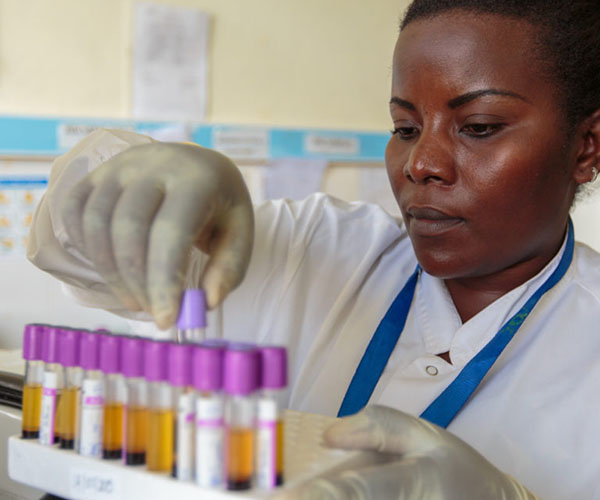CHAI is proud of the progress that we have made over the past year to address health issues in low- and middle-income countries. We have not made that progress alone. We work closely with governments, other organizations and community groups, as well as the private sector, to save lives and reduce the burden of disease. As we close out another year, we are looking back at four highlights from our work in 2019, which show the strength of what partnerships can accomplish.
Nigeria launches public-private partnership to ensure affordable access to high-quality chemotherapies.

Announced in October 2019, the new program, known as the Chemotherapy Access Partnership, will deliver lifesaving chemotherapies for cancer treatment to seven teaching hospitals throughout Nigeria. As a result, Nigerians are expected to save up to 50 percent of their treatment costs, enabling thousands more patients to access care.
The program is a partnership between the Nigerian Federal Ministry of Health, CHAI, the American Cancer Society, Pfizer, Inc., Worldwide Healthcare, and EMGE Resources, Limited. It will enable people with cancer in Nigeria to access lower-priced, high-qualit y treatments at hospital pharmacies. At the same time, the partnership will provide immediate payment to participating pharmaceutical companies and drug distributors to ensure the system is sustainable. This will enable Nigeria to double the number of patients being treated with the same resources. Learn more about the program.
Strategic partnership between government and industry pushes Guatemala toward malaria elimination.

In 2018, half of all malaria cases in Guatemala were reported in one region, Escuintla. Escuintla is characterized by a large number of sugarcane plantations, which represent the main source of work for tens of thousands of local and migrant workers during harvest season. The harvest coincides with peak malaria season, and unfortunately, the plantations are located in areas most at-risk for malaria transmission.
CHAI began working with the region’s sugarcane production association, ASAZGUA, and the National Malaria Program (NMP) to improve access to quality diagnosis and treatment options for agricultural workers in Escuintla. Initiatives included opening new points of care and training nurses on the plantations, as well as a communications campaign to educate workers on how to seek treatment. Learn more about the approach, results, and next steps for the program.
Following their lead: Engaging with communities of people living with HIV.
In 2016, CHAI, in partnership with AfroCAB and HIV i-Base, created the Optimal ARV Community Advisory Board, with the encouragement of a strong network of civil society leaders and support from donors such as Unitaid. This work has been critical to supporting the introduction of, and building demand for, HIV treatment products.
This year, CHAI’s Senior Director for HIV Carolyn Amole, reflected on that shift on World AIDS Day in December, and in our annual report. There are 39 million people living with HIV around the world. The numbers are so large that it can be difficult to remember that individuals exist behind the statistics. That is why this partnership is essential to CHAI’s success, wrote Carolyn: “People living with HIV will remain after all the international funding has dried up and all the NGOs have left, and it is a responsibility and a privilege to support and follow their lead everywhere we work.”
We further reflected on the theme of community at the annual International Conference on AIDS and STIs in Africa (ICASA) in Rwanda, later that same month. CHAI co-hosted a satellite session where we discussed the role of community engagement in HIV treatment optimization with many of our partners. At the end of the session, a panel shared the experiences, opportunities, and lessons learned from community engagement in HIV treatment programs across several countries. The critical importance of the relationship between program builders, care providers, and communities of people living with HIV was highlighted by Dr. Clorata Gwanzura, with the Zimbabwe Ministry of Health and Child Care.
“Sometimes we offer a service and allocate resources, and no one uses it…because we’ve never asked recipients of care what they want. When we engage community at the beginning, we can structure services, so they meet their needs,” she said.
Partnerships will help Rwanda eliminate hepatitis C in less than five years.

At the end of 2018, Rwanda committed to eliminating hepatitis C by 2024, but building on the progress the country has already made in eliminating the disease in a number of high risk sub-populations, strong leadership support, and an increasing population response, Rwanda believes that HCV elimination will be possible in less than five years. Achieving this goal will not only make Rwanda the first country to do so in sub-Saharan Africa, but will also place it way ahead of the 2030 World Health Organization’s global target for elimination.
Over the elimination period, Rwanda will scale up screening sites and labs, and will train doctors and nurses who can manage hepatitis C in order to screen four million people and treat 112,000. The country has already made progress in 2019, treating over 15,000 people and screening more than a million. But Minister of Health Dr. Diane Gashumba says the country won’t achieve its goal without the support of partners to invest in the plan. The country has initiated local fundraising efforts targeting church leaders, local government, and the private sector to engage with the work on the ground.
“Rwanda has always overcome what seemed to be impossible. Through outstanding leadership, community engagement, and successful partnerships, we will send hepatitis C to the dustbin of history,” said Dr. Gashumba.
CHAI, along with other partners, including Partners in Health, MTEK Sciences, the University of Maryland, and Duke University, support Rwanda in these efforts. Learn more about Rwanda’s journey toward HCV elimination.





